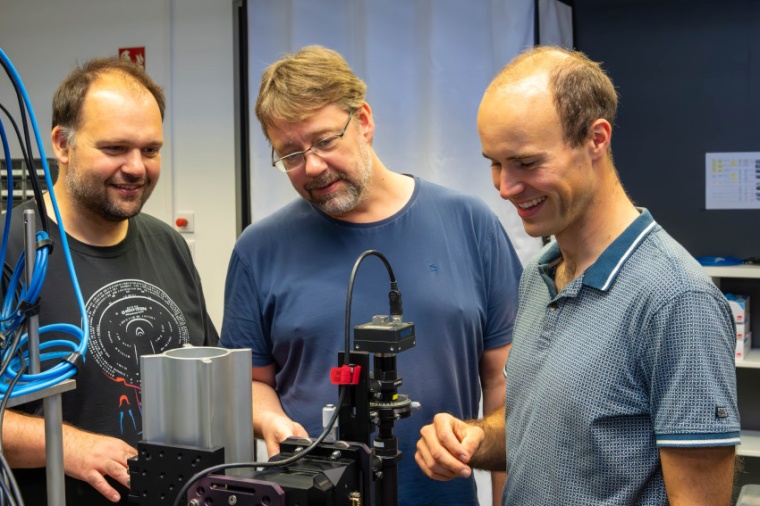Photon pairs interfere with a twist
Stabilizing the interference of two photons in optical chips.
A collaboration of Alexander Szameit's research group at the University of Rostock with researchers from the Albert-Ludwigs-Universität Freiburg has succeeded in stabilizing the interference of two photons in optical chips with the concept of topologically protected wave propagation. For this result, the researchers explored light evolution in optical waveguide circuits in the presence of topology. This abstract mathematical concept was initially developed to classify solid geometries according to their global properties. Szameit explains: “In topological systems, light only follows the global characteristics of the waveguide system. Local perturbations to the waveguides such as defects, vacancies and disorder cannot divert its path.”

In 1987, the physicists Hong, Ou and Mandel observed the behaviour of photon pairs in a beam splitter in an experiment that until recently had been independent of topology. They discovered that a photon, which interferes with itself due to its behavior as an electromagnetic wave, is also able to form interference patterns together with other light particles. In addition to entanglement as further fundamental feature of quantum light particles, this groundbreaking discovery has proven to be an instrumental ingredient for new optical quantum technologies, including quantum computers. In a joint effort with colleagues from the Albert-Ludwigs-Universität Freiburg, the researchers have accomplished to combine topologically robust propagation of light with the interference of photon pairs.
“This result is truly a milestone,” says Szameit, who has been searching for such a connection for a long time. Max Ehrhardt, doctoral candidate, continues: “Quantum technologies struggle with ever-increasing complexity. Hence, topological protection of optical elements is a much-needed design tool to ensure proper operation regardless of the finite manufacturing tolerances of the optical elements.” The physicists attribute the observed peculiar behavior to the quantum nature of light: “Pairs of photons that see each other perceive the waveguide structure as twisted. This causes them to link up, as if they were dancing along the twisted dance floor as a couple. Photons that pass through the waveguide separately only experience a conventional flat surface. So, we have a topological difference”, continues Ehrhardt to explain the mechanism.
“We were amazed just how far we could deform our waveguide system without any impact on quantum interference,” summarizes the group’s senior scientist Matthias Heinrich. Szameit already thinks of further perspectives to be investigated by his team: “Our waveguide systems provide a rich pool of possibilities for constructing topological systems for light. The symbiosis with quantum light is just the beginning.” (Source: U. Rostock)
Link: Experimental Solid-State Optics, University of Rostock, Rostock, Germany











